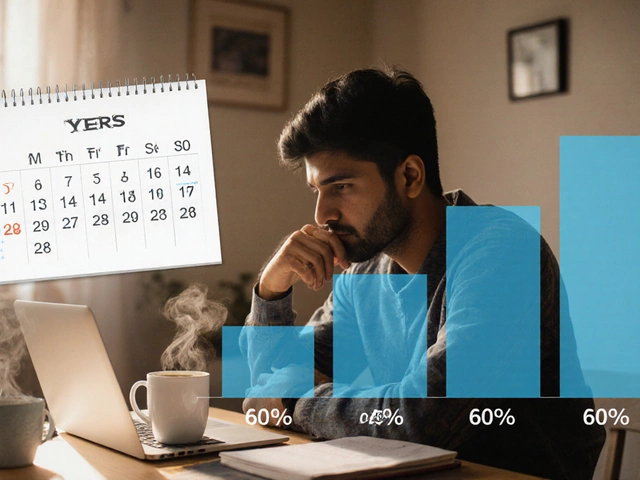Imagine waking up, grabbing a flat white, and your phone pings with another payment in your account—all because of your blog. Sounds far-fetched? Not really. Blogging isn't just an online diary anymore. People in Australia and across the globe are turning their blogs into serious income streams. Even teenagers in Bondi and parents in Western Sydney have cracked the code. So what's the real secret behind cashing in from a blog?
The Foundations: Traffic and Trust
If you think you can make cash from a blog without traffic, you’re dreaming. It all starts with readers. Think about it: companies don’t pay you for pretty words; they pay for eyeballs. Take a gardening blog in Melbourne—one viral post on native succulents, and suddenly they're landing sponsored deals with local nurseries. But before you get paid, you need two basics: traffic and trust.
First, let’s talk traffic. The more people who come to your site, the more potential you have to earn. Australian blogs that crack 10,000 monthly visits are in rare air—only 5% make it that far. You get there by writing killer content, showing up consistently, and actually solving readers’ problems. It could be detailed tutorials, product reviews, timeless advice, or wild storytimes. Broken links and vague advice? Nah, that’ll send people running to your competitors faster than a Sydney tram during peak hour.
Now, trust. If readers don’t believe you, they won’t click, buy, or sign up—simple as that. Trust is built with honesty. If a product stinks, say so. When you admit the tools you use (even if they’re free ones), people stick around. Respond to comments, correct mistakes, and be a real human in your writing. Readers talk, especially in Aussie Facebook groups, and word travels fast whether a blogger is legit.
Once you nail those two, you’re halfway to getting paid from a blog.
Monetization Methods: Turning Words into Cash
There’s no single path to blog income, which is good news. You can mix and match the following money-makers based on your style and audience. Different niches pay differently too. A beauty blogger might land $300 for a single sponsored post, while a food blogger pulls in regular affiliate sales for each cake tin link.
Get paid from a blog by understanding each method deeply:
- Ad Networks. Google AdSense is where most bloggers start, but it’s not the only game in town. If you have an Aussie audience—and over 50K monthly views—think about Mediavine or AdThrive. Local blogs with under 10k views might see only spare change, but build your traffic and the ad cheques get juicy.
- Affiliate Marketing. This is word-of-mouth on steroids. You recommend products—someone clicks your link, buys, and you earn a cut. Tech and lifestyle bloggers often use Amazon Australia, but Skimlinks, Commission Factory, and Awin can open up other Aussie retailers. Top affiliates report over $2,000 AUD a month as side income, just from linking to stuff they already use.
- Sponsored Content and Brand Deals. Brands want exposure. If your audience matches theirs—even if you’re not massive—you can get paid for honest reviews or “spotlight” posts. Rates start low (a local fitness studio might offer $50 a post), but once you pass 15,000 monthly readers, suddenly $250+ per post is standard. Don’t forget to use #ad and be transparent, readers appreciate it.
- Digital Products and Courses. If you know your stuff—maybe it’s gluten-free recipes or how to use Canva—why not package that knowledge up? Ebooks, video courses, printable planners. Once set up, they keep making you money, even if you’re hiking the Blue Mountains. Teachable and Gumroad are popular for Aussies, and you set prices yourself. Some bloggers make more from a single $49 course launch than a whole year of ads.
- Memberships and Exclusive Communities. Run a private Facebook group, forum, or newsletter for your die-hard fans. Charge monthly using Patreon or Buy Me a Coffee. Sure, this isn't for everyone, but even small, loyal followings can pay off (think: $5 per member, 100 members—$500 a month on autopilot).
- Freelance Opportunities. Sometimes, blogging is the showcase. If you write about digital marketing, local business owners might hire you for copywriting. Or you get offers for speaking gigs, consulting, even ghostwriting books. It all starts by putting your best work forward, regularly.
Here’s a quick look at some typical earning ways and average numbers from real Aussie bloggers:
| Monetization Method | Typical Monthly Earnings (AUD) | Traffic Required |
|---|---|---|
| Ad Networks | $10–$2,000 | 1,000-50,000+ monthly |
| Affiliate Marketing | $50–$3,000 | Any, but higher is better |
| Sponsored Posts | $50–$2,500 per post | 10,000+ monthly |
| Digital Products | $100–$10,000+ | 1,000+ loyal readers |
| Memberships | $50–$2,000 | 100+ loyal followers |

Getting Paid: Payment Platforms, Invoicing, and Aussie Rules
Let’s talk about the money actually landing in your hands. This bit trips up a lot of bloggers—one minute, they’re making US dollars online, next, their bank is charging conversion fees that eat half the profit. The trick is to set yourself up the smart way from the start.
First, choose your payment platforms carefully. PayPal is still the workhorse—nearly every ad network, affiliate program, and sponsor will pay you through it. Open an account that matches your blog name, if possible, to look more professional. Stripe is another option—useful for selling your own products and accepting credit card payments. TransferWise (now Wise) is cheaper for converting those US or UK payments into Aussie dollars.
Don’t skip the business basics. Even as a solo blogger, having an ABN (Australian Business Number) isn’t just smart, it makes you look legit. It’s free to get one online. Create invoices for each payment—lots of companies will ask for them before sending money. There are templates galore online; just make sure to include details like your blog name, ABN, and payment method info. Xero, Wave, and even Canva make slick, easy invoices Aussie sponsors expect.
Watch out for tax time. This catches a lot of beginners by surprise. The Australian Taxation Office treats blog money as business income. Set aside anything from 15% to 30% as a buffer depending on total income—trust me, it’s way less painful to pay tax if you’re ready than if you’re suddenly scrambling. Expenses for your blog (like hosting, design tools, or even internet bills) are usually tax-deductible.
When it comes to actually getting paid, here’s the quick system most Aussies use:
- Set up a dedicated bank account for blog income. ANZ, Commonwealth—doesn’t matter, just keep it separate from your personal spend.
- When a payment lands (PayPal, Wise, direct deposit), record it in a basic spreadsheet or cloud tool.
- If required, send a tax invoice with your ABN and banking info. Brands and agencies will usually reply within a month.
- Transfer funds to your bank. Most people choose to pay themselves a ‘salary’ from this account for stability.
- Track every cent. Remember, end-of-June is the end of the financial year, so be ready by tax time (hint: accountants who know digital business are worth every cent).
Double check: are you keeping an eye on recurring payments, like membership fees, hosting, email marketing? Outflows can creep up if you're not careful.
Tips for Boosting Income and Avoiding Common Pitfalls
Here’s where lots of bloggers get stuck: they assume slapping ads on every page or recommending a random protein powder will lead to a payday. That can backfire. Aussie readers are a skeptical bunch. They don’t like in-your-face sales pitches. Instead, focus on quality, honesty, and relationships with both brands and readers. Trust me, it pays off.
Want to lift your income? Here are some tested tips from the trenches:
- Pick a specific niche. Sydney foodies? Outback travel hacks? You'll face less competition and attract advertisers who pay a premium for your unique crowd.
- Build your email list from day one. Platforms like MailerLite are free for small lists, and having direct access to readers’ inboxes means you can promote products and sponsor deals even if traffic wobbles.
- Network with other Aussie bloggers. Collaboration posts, link exchanges, group giveaways—they generate bursts of new readers and attract brand attention. Hop into Facebook groups or attend the ProBlogger Event; it’s money well spent.
- Be choosy with affiliate links. Only promote products you trust. If your skincare review links to a dodgy brand and one reader breaks out in hives, you’ll lose trust (and traffic) for good.
- Experiment with different income streams, but track what works. If sponsored post requests double after a Google traffic boost, focus there. If ebooks flop but affiliate sales rise, change tack. Don’t be afraid to tweak your approach every few months.
- Use analytics. Google Analytics shows you what content gets the most eyeballs; focus your energy there. Even a spike from Reddit or Facebook can bring in new sponsors if you move fast.
- Don’t ignore mobile users. Over 60% of Aussie blog visits now come from phones. Make sure your site loads fast and looks great—even on a 4G connection out at Manly Beach.
And some traps to avoid:
- Don’t plagiarize—big brands run checks, and Google’s harsh if you copy content. Write in your own voice, always.
- Never buy dodgy backlinks or followers hoping for a traffic shortcut. You might rise fast, but penalties can destroy your blog overnight.
- Steer clear of 'get-rich-quick' schemes. If a brand offers you $2000 for a single link with no strings attached, it's probably not legit. A cautious approach will save you from Google penalties.
- Read every contract. If a sponsor asks you to remove disclosures or hide links, walk away. Protect your reputation—it’s worth more than a single payout.
- Don’t put off your taxes. The fine print with the ATO is scary if you fall behind, but staying ahead is simple with some discipline.
Blogging doesn't pay everyone the same. Some spend years earning pocket money. But for those who keep learning, adapting, and connecting, it's a real shot at steady income—and you can do it from anywhere, even a Sydney café on a rainy Wednesday. Remember, every big Australian blogger started with a single post and zero readers. Why not be the next?



